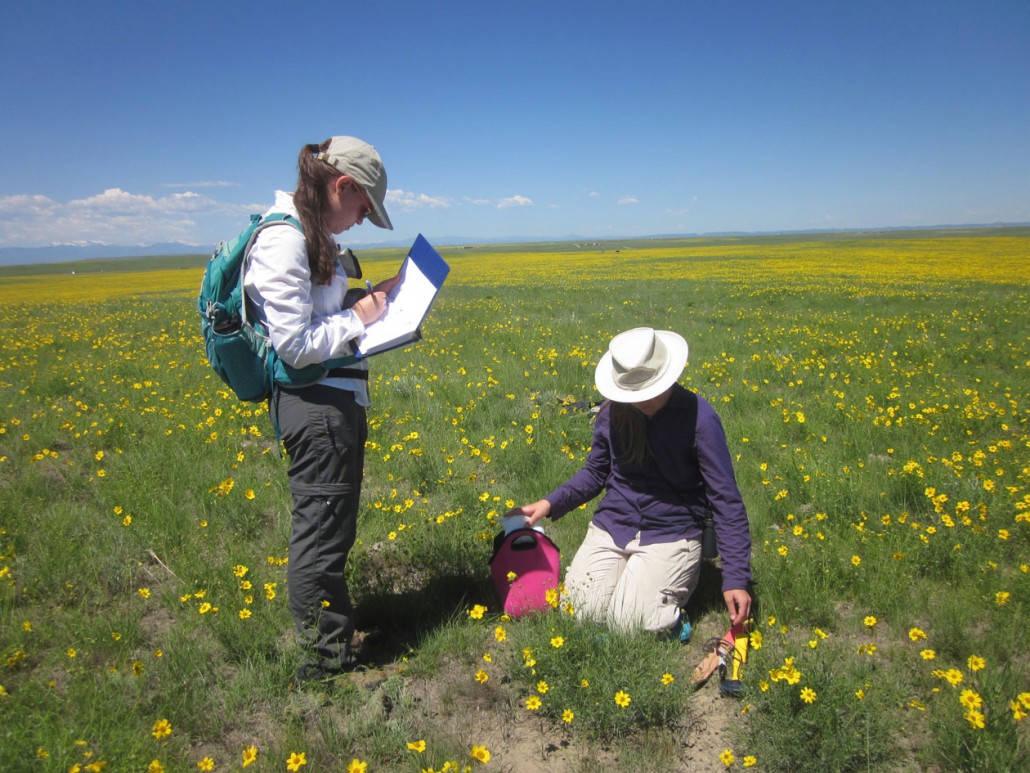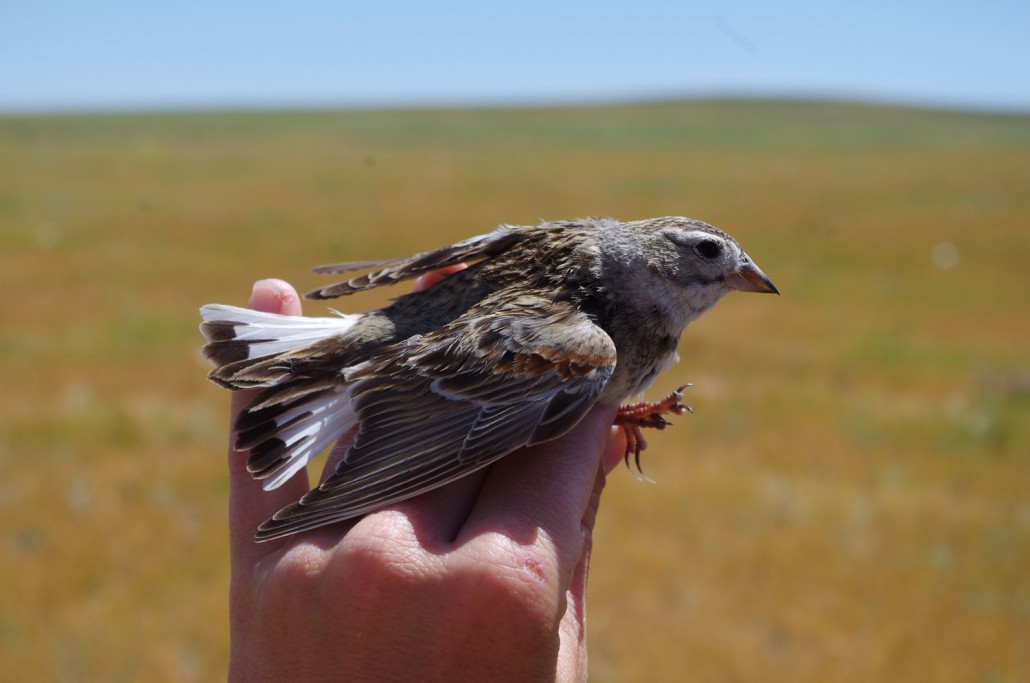Grassland birds and Grazers
Studying the impacts on McCown’s Longspur
By Angela Dwyer, Grassland Wildlife Coordinator, Nebraska Prairie Partners, Science and Stewardship
The Central Plains Experimental Range (CPER), adjacent to the Pawnee National Grasslands, is a beautiful locale in northeast Colorado where an intact prairie landscape still exists. For decades, research ecologists have been studying the effects of long-term grazing at CPER. In the past, grazers consisted mostly of bison; however, ranching can mimic these historic conditions. Grazing often benefits many species of plants and wildlife. Researchers, range managers and private ranchers are working together to examine the landscape at CPER in more detail through an adaptive grazing management experiment.
Does adaptive grazing benefit the birds, landscape, cattle and ranchers?
Plant response, cattle weight gains, soil conditions and grassland bird nesting survival are key areas of study by biologists to help answer that question. Over the course of 10 years, they will compare pastures using adaptive grazing to pastures using traditional grazing. In adaptive grazing, cattle stocking rates vary and the animals utilize several pastures over the course of the season. Traditional grazing involves a fixed stocking rate in each pasture throughout the grazing period. We hope this research will shed light on how certain grazing practices can be beneficial to the both ranching community and the shortgrass ecosystem.
Studying these birds is not easy!
We have been working alongside the USDA-Agricultural Research Service and the University of Colorado-Denver to oversee a graduate student investigating the breeding success of McCown’s Longspur, a ground-nesting grassland species. I had the fortune of helping our graduate student, Amber, locate ground-nests in 2014 and 2015. In a vast grassland, this can be tricky and labor intensive. But, the hard work paid off. Amber located and monitored more than 300 nests from at least five ground-nesting grassland bird species. The majority of nests came from Lark Buntings. Unfortunately, wet weather hindered McCown’s Longspur nesting. Twenty-seven nests were found in 2014; 36 in 2015. Other species included Brewer’s Sparrow nest, Horned Lark, Common Nighthawk and Grasshopper Sparrow.
And life is not easy for these birds.
The McCown’s Longspur is suffering a stark decline—an astounding 95% drop since 1966. Predators cause the majority of nest failures, but bad weather can have an impact. One hailstorm knocked out 75 of 113 nests in 2014. Even nests tended by incubating adults—some of which died trying to protect them—didn’t survive the storm. They prefer the shortgrass and disturbed areas grazing can provide, making the CPER a perfect home. We know little of the breeding success of this bird on CPER, and will continue to explore what effect that grazing practices have.
It will be years before the results of this research are complete. Like the work of finding ground nests, it is not fast and not easy. But the end result is worth the effort and, we hope, an important step toward informing grazing practices that benefit both birds and ranching.




